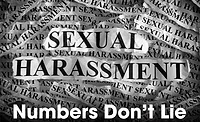Additional Insured Endorsement Considerations for GCs

As a licensed general contractor and insurance broker, I’m often asked by trade and general contractors for guidance with their risk management. Usually, they’ll ask me how I managed risks with my own construction company through the years.
We constructed a new building for our company 3 years ago, for which I was the general contractor. We hired the construction managers and all the trade contractors. On most commercial jobs, including our own, artisan or trade contractors are not allowed to set foot on the job unless they name the property owner, general contractor, and/or construction managers as an additional insured with “your work” wording for completed operations.
Any additional insured endorsements with ongoing operations triggers were not acceptable for the completed operations exposure. The acceptable types of additional insured endorsements are commonly referred to as CG 20 10 11/85 or CG 20 37 07 04 or their equivalent, if acceptable to the general contractor. If a sub does not have these forms, they are absolutely not allowed to set foot on the job.
We required the sub to sign our contract; we never signed their contract, ever. In our contract we had an indemnification and “hold harmless” agreement we required them to sign. We also required primary wording, and primary non-contribution wording, endorsements in their policies. Our goal was to lay off as much risk as we could to our subcontractors.
Wise general contractors should read their own policies and make sure there is no sub-contractor warranty in their policy. Basically, this endorsement says that if the insured general contractor does not obtain a certificate, get named as an additional insured, have a signed indemnification and a “hold harmless” agreement, the carrier would have no obligation to defend a claim against the general contractor.
It is wise to always attempt to negotiate this form away in case a sub has their insurance policy lapse at the time a claim needs to be presented, or the sub’s carrier denies a claim for some reason.

These endorsements are worthless to the general contractor named on these additional insured endorsements if he needs to use the endorsement for a construction defect claims many years later after the sub is no longer on the job.
A bad situation can also arise for contractors when naming others, including other general contractors, property management companies, franchisors or third-party claim administrators, as an additional insured. Most contractors typically sign indemnification agreements to obtain this type of work to be on a preferred vendor list. These documents typically require the contractor to indemnify the additional insured, regardless of whether or not their insurance triggers.
Many of the carriers writing restorers and other types of contractors will not offer “your work” wording for completed operations. These companies issue additional insured endorsements which state the additional insured may make a claim as long as there are “ongoing operations.” If a claim is presented and there are no ongoing operations, the property has been put to its intended use and the job has long since ended, the additional insured would not trigger. The additional insured could not “step into the contractor shoes” for a defense, and would be forced to sue under the indemnity agreement.
The words “your work” or “your work with respect to the products-completed operations hazard,” used in the proper context on the proper endorsement for a constructions defect claim, would allow the additional insured endorsement to trigger, as the work was done during the policy period. The worst-case scenario is when a contractor is forced to provide a legal defense with the lawyers chosen by the party in the indemnity agreement he originally named as an additional insured, because his carrier does not agree to defend the party he named as an additional insured endorsement, as they provided “ongoing operations” only.
Looking for a reprint of this article?
From high-res PDFs to custom plaques, order your copy today!








